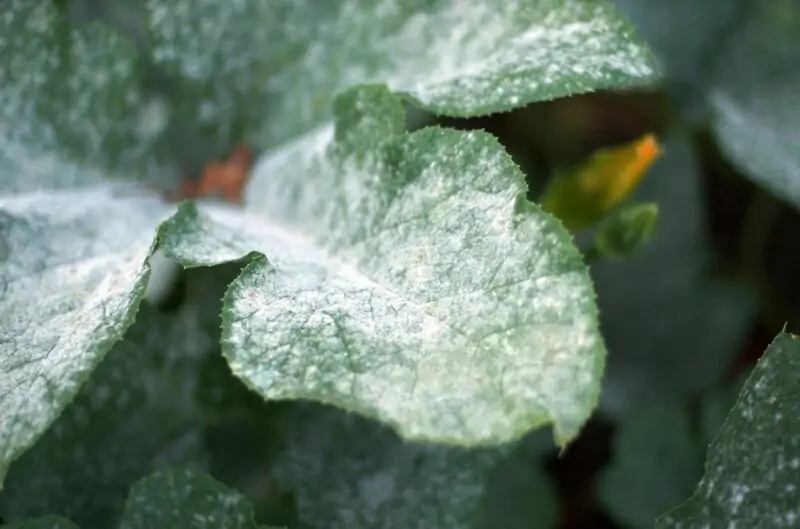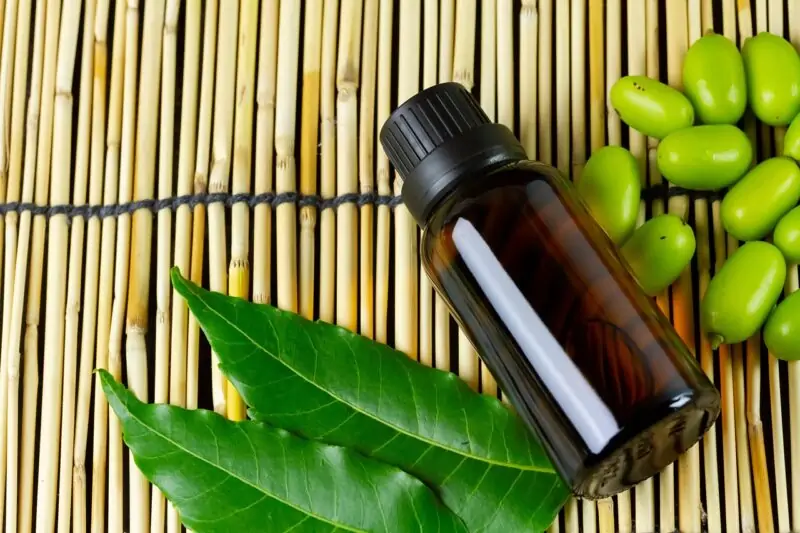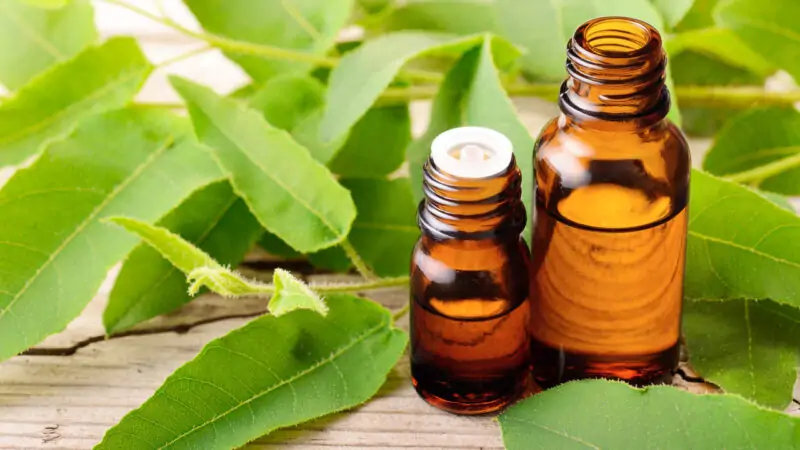Use Neem Oil for Powdery Mildew: Natural Fungicide Solutions

Hello, fellow gardeners! Let me ask you something. Have you ever strolled through your garden only to be greeted by a powdery white film on your plants? You may have been a victim of the infamous “powdery mildew.” If you’re looking for a way to destroy powdery mildew or learn how to prevent it, you’re in luck. Today, we’re going to delve into this bothersome plant disease and discuss a superhero in disguise—neem oil for powdery mildew. Strap on your gardening gloves, and let’s dig in!
Powdery Mildew
What is Powdery Mildew?
Powdery mildew is a common issue. Any gardener who suffers from it will experience sleepless nights. Different types of powdery mildew fungi are to blame. These cunning bacteria attach themselves to vulnerable plants and disperse their powdery mildew spores like tiny scribblers. However, their art isn’t really that appealing, is it?
Identifying Powdery Mildew
Powdery White Appearance
Imagine a plant leaf sprayed with a light dusting of powdered sugar. That’s the hallmark of powdery mildew—this fungal disease presents itself as a powdery white or gray coating on your plant parts, mainly the leaves and stems.
Effects on Leaves and Stems
Oh, but it doesn’t stop at the surface. This plant fungus affects the plant cells and can cause the leaves to curl or yellow, reducing your plant’s runway-worthy appeal. Infected leaves may even drop prematurely. As this fungus takes over, it weakens the entire plant. Not exactly a guest you’d invite to a garden party, right?
Powdery Mildew on Vegetables
Cucumber
One type of plant that’s particularly susceptible to powdery mildew is the cucumber. This fungus makes itself at home on the foliage, causing the leaves to become mottled with a white powdery substance. It’s not a pleasant sight and definitely not good for your cucumber’s health.
Squash
The same goes for your beloved squash plants. These are not immune to powdery mildew either. Once the powdery mildew symptoms appear, you need to act fast. Infected plant parts need to be removed pronto to prevent further spread of this plant disease.
Powdery Mildew Control
When devising a way to treat affected plants, you’re going to want a remedy that’s effective, safe, and preferably organic. And that, my gardening friends, is where neem oil steps onto the stage.
Neem Oil

What is Neem Oil?
Derived from the seeds of the neem tree, the oil is a natural insecticide and fungicide. It can be used to treat a myriad of pests and diseases, making it the gardener’s secret weapon.
As a Fungicide
Besides being great at controlling pests, neem oil is a fantastic fungicide. This oil can be used to combat a variety of fungal diseases, including the notorious powder mildew menace.
For Powdery Mildew Control
Neem oil kills powdery mildew on plants by disrupting the life cycle of the fungus, preventing it from spreading and causing further damage to your susceptible plant. Plus, it’s safe for the environment. So you get control of powdery mildew without upsetting mother nature.
Using Neem Oil to Control Powdery Mildew
When to Use
It should be applied as soon as you notice the powdery mildew in your garden. To control powdery mildew and stop it from getting worse, early intervention is essential.
How to Use for Powdery Mildew
Neem oil should be sprayed on all infected plant parts as well as the surrounding soil to destroy powdery mildew spores that may be hiding there. Before using it, follow the label instructions for mixing neem into a spray. Yes, it is necessary to water the undersides of leaves and lower leaves, because there is where powdery mildew thrives.
Preparing and Applying Neem Oil Spray
To make the spray, mix 1 tablespoon of neem oil with 1 gallon of water and a squirt of liquid soap. Why the soap? It helps the oil stick to the plant foliage. Spray for powdery mildew in the early morning or late evening to avoid the sun’s heat. This approach is very effective against powdery mildew and doesn’t break the bank either.
Additional Pests Neem Oil can Control
And here’s a bonus! Neem oil is not just for treating powdery mildew; it’s also effective against a host of pests. From aphids to caterpillars, this oil is a strong preventative measure that acts like the garden’s bodyguard, keeping unwanted visitors at bay.
Alternatives to Neem Oil for Powdery Mildew Control

Using Sulfur as a Fungicide
If neem oil is not your cup of tea, you can also use sulfur in controlling this disease. It has a long history of use in dealing with powdery mildew infections. But beware, sulfur can kill plants. When you prepare any remedies, use them only as directed to avoid damaging your precious blooms.
Other Spray Remedies for Powdery Mildew
Baking soda combined with water and liquid soap is one of several alternative home treatments. 1 tablespoon baking soda in a gallon of water should be plenty once again. It is a more humane method of treating powdery mildew without endangering the helpful insects.
Biological Fungicides for Powdery Mildew
For those inclined toward organic farming, biological fungicides are a fabulous option. These fungicides use good bacteria or fungi to fight off the powdery mildew fungi. How’s that for nature fighting its own battles?
Prevention of Powdery Mildew
Environmental Control of Powdery Mildew
Environmental control is a crucial step in preventing powdery mildew. That includes doing things like not overcrowding your plants, removing plant debris, and not using a sprinkler (powdery mildew loves wet leaves!).
Preventing Powdery Mildew with Neem Oil
Neem oil can also be used preventatively. Regular sprays can help keep powdery mildew at bay, safeguarding your plants’ health and beauty. It’s like giving your plants a protective shield against fungal disease. Powdery mildew is easy to deal with when you stop it before it can take hold of your plants.
Frequently Asked Questions
Yes, indeed! Neem oil is a fantastic remedy to get rid of powdery mildew, even when it’s already established on the plant.
Generally, yes. But like all remedies, you should test it on a small area first. Some plants may be sensitive to oils or sulfur.
Weekly applications are typically sufficient, but during high-risk periods, like humid and warm weather, more frequent applications may be required.
Neem oil is generally safe for beneficial insects when used appropriately, as it mainly affects pests that chew on or suck plants.
Conclusion
Well, there you have it, folks. Using neem oil for powdery mildew control is a safe, effective, and eco-friendly method to keep your garden free from this troublesome fungus. Whether you’re growing roses or cucumbers, neem oil is your go-to remedy to ensure healthy and vibrant plants. So the next time powdery mildew appears and tries to stake a claim in your garden, you’ll know exactly what to do! Happy gardening, everyone!